JHP Newsletter - 2009, No. 4, 26 June
Greetings from Banff National Park, Canada. A lot has happened since the last Newsletter, so this will be a long one.
Equipment: Canon EF 800mm f5.6L IS USM
I had an opportunity to borrow a Canon EF 800mm f5.6L IS USM lens recently. The lens is very intriguing, and I was glad to have the opportunity to evaluate it. The focal length is a nice step up from a 500 f4, my usual long glass, and is close to the 700mm effective length of the 500 f4 with a 1.4x teleconverter, a combination I use a lot. The physical specifications of the 800 f5.6 are also close to the 500 f4: 6.4 in. max diameter vs. 5.8 in. max diameter, 18.1 in. long vs. 15.2 in. long, 9.9 lbs. vs. 8.5 lbs. According to the MTF charts on Canon's site, the 500 f4 is a bit sharper than the 800 f5.6, but I bet that the 800 f5.6 is sharper than the 500 f4 with the 1.4x teleconverter. One limitation of the 800 f5.6 is that it has a minimum focus distance of 6.0m (19.7 ft) which is much longer than the minimum focus distance of the 500 f4 (4.5m or 14.8 ft). That makes a big difference when shooting a small bird up close, especially when using the 1.4x on the 500 f4. Of course, extension tubes can be used for close shooting.
In the field, the 800 f5.6 handles just like the 500 f4. The new IS system in the 800 f5.6 makes a different sound than the older one in the 500 f4 and it spins up much more quickly. Autofocus is fast and the images are sharp.
If I had to choose just one long lens, I would still select the 500 f4 because it's more versatile and the list price is significantly less: $6999 vs. $11999. The 500 f4 can be used for large mammals and with the 1.4x it's convenient for small birds. The 800 f5.6 is probably better suited for mainly small animals that are very skittish.
Travel: Wild Horses in Wyoming
In early May, we went through southern Wyoming to get to Utah instead of going through central Colorado so we could see something different. We spent two nights just north of Green River, Wyoming, in some BLM land so we could see and photograph wild horses there. The horses were in a great setting with nice light and they were also fairly cooperative. The best part was shooting the recently-born foal (below left). The little guy still had some wet blood on his inner thighs when we first came across him! Another group of horses contained two young stallions who kept playing with each other (below right).
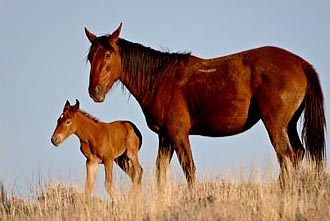
1/500 sec, f11, ISO 400
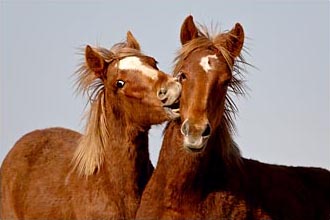
1/750 sec, f11, ISO 400
Travel: Antelope Island and Bear River
Then we went to Antelope Island State Park, Utah, for two nights. Antelope Island is the largest island in the Great Salt Lake and is connected to the mainland via a causeway. It was our first time there when it wasn't covered by snow, and it really looked different! The bird life was still good and the insect life was out of control! There were clouds of chironomids, or midges, along the causeway and way too many biting gnats around the campground! From the causeway, we had great opportunities to watch and photograph American avocets mating (below left)! The campground provided great opportunities to photograph chukar (below center) and meadowlark (below right) while getting eaten alive by the biting gnats.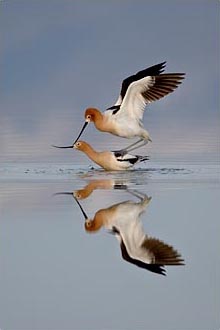
1/500 sec, f8, ISO 400
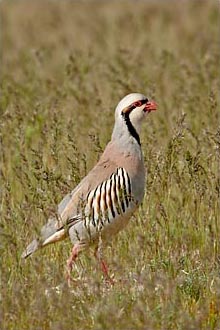
1/1000 sec, f8, ISO 250
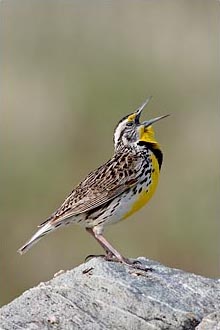
1/1000 sec, f8, ISO 400
The highlight of our time in the US before hitting Canada was the Bear River Migratory Bird Refuge along the Great Salt Lake just a little further north than Antelope Island. The refuge is a large managed wetland with manmade dikes and canals to control water levels with several driving loops through it to provide access. It was our first time there, and we thoroughly enjoyed our two nights in the area. On our first afternoon, we watched a Western grebe pair go through a courtship ritual where the male would catch fish and then offer it to the female (below left). Yellow-headed blackbirds were very common, and some were quite cooperative (below right).
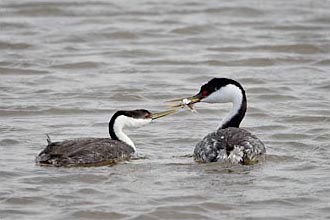
1/750 sec, f8, ISO 400
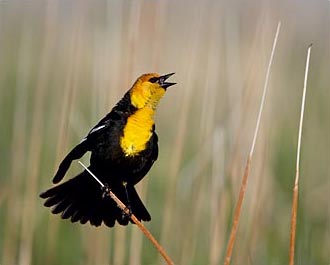
1/750 sec, f9.5, ISO 250
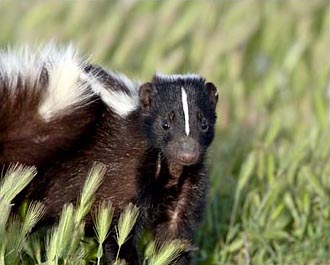
1/350 sec, f8, ISO 400
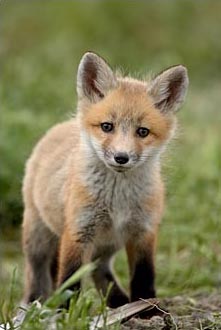
1/250 sec, f5.6, ISO 400
Travel: Southern British Columbia
We crossed over into Canada and spent six nights visiting some photography friends in Osoyoos, British Columbia, just across the border from central Washington. Osoyoos is in the Okanagan Valley, and is the sun spot of Canada. The environment is very similar to the higher elevations of New Mexico with sagebrush being the dominant native plant. Our friends have a nicely landscaped back yard that's home to hummingbirds, bluebirds, and quail. Calliope hummingbirds (below left) are the most abundant species there, and we also had opportunities to photograph rufous hummingbirds. The black-chinned hummingbirds there are rather shy. Nearby, we had an opportunity to photograph bitterroot (below center). Our friends knew exactly where to find some Lewis's woodpeckers not too far away in Washington, so we crossed back into the US to photograph this interesting species. I had never seen so many woodpeckers as were in the area where they took us! We first came across a tree with four or five, then just down the road was another tree with half a dozen, and then further down the road …, yadda yadda yadda. Of course, some individuals were more cooperative than others, and after some time, I was able to get a half decent shot of one perched out in the open (below right).

1/250 sec, f8, ISO 200

1/500 sec, f5.6, ISO 100
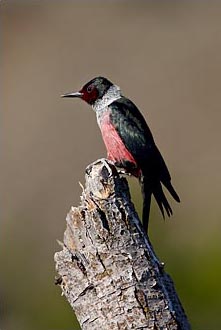
1/750 sec, f8, ISO 200
On our way to Vancouver Island, we stopped at Manning Provincial Park and fell in love with the place. It's right along the border with the US and parts of it are adjacent to North Cascades National Park in Washington. Manning is great for wildlife and there were very few people!!! We saw and photographed two black bears, but the most enjoyable experience was photographing the Columbian ground squirrels near Lightning Lake. The individual in the image below left was gathering nesting material, others were playing with each other, others just posed nicely, and some came right up and begged for a handout. The highlight for me was photographing a very cooperative Barrow's goldeneye pair. The male (below right) is particularly striking.
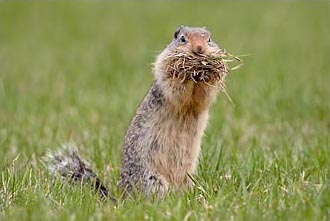
1/250 sec, f8, ISO 400

1/1000 sec, f8, ISO 400
Travel: Vancouver Island
We took the RV over to Vancouver Island to visit more of our photographer friends. First stop was Nanaimo for five nights. We photographed several wildflower species at a meadow near town, and I especially liked the Nootka roses (below left), the species of wild rose on the island. We spent a day at Cathedral Grove in MacMillan Provincial Park, famous for the Douglas firs that are hundreds of years old. I spent most of my time there photographing the sword ferns (below center). On two days, we went to Parksville to photograph the bald eagles that were congregating to feed on the plainfin midshipman (fish) trapped as the tide went out. There were at least 40 eagles visible at one time, and one adult was very cooperative. He was busy feeding and didn't mind us getting quite close to him (below right). He could have been used as the poster-bird for Benjamin Franklin's bid to have the wild turkey be the American symbol instead of the bald eagle because bald eagles can be very dirty scavengers.
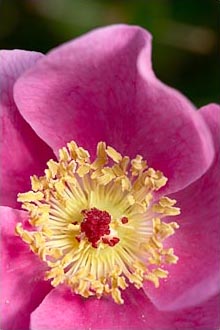
British Columbia, Canada
1/45 sec, f11, ISO 100
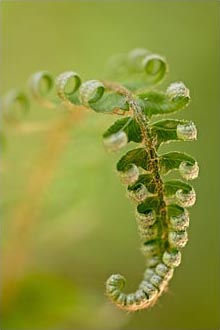
BritishColumbia, Canada
1/8 sec, f4, ISO 100

Plainfin Midshipman
British Columbia, Canada
1/350 sec, f11, ISO 250
One evening we had a thrilling encounter with a group of river otters swimming in the sound. We were able to get in good position to photograph them as they were about to get out of the water (below left). On our way south towards Victoria, we stopped at Goldstream Provincial Park to photograph Niagara Falls (below right). This landscape-oriented image of a primarily vertical waterfall works for me because the fall is balanced with the diagonal of the rock formation on the left and the shallow diagonals of the water level create some mirroring.

British Columbia, Canada
1/350 sec, f8, ISO 400
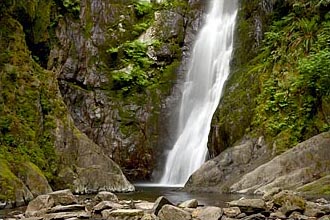
British Columbia, Canada
3 sec, f11, ISO 100
We spent five nights at the beginning of June at friends' in Saanich, a suburb north of Victoria. They also have hummingbirds in their back yard, and I was able to get some nice shots of Anna's hummingbirds (below left) and Rufous hummingbirds (below right) in flight. I used a 25mm extension tube with the 800 f5.6 to get close enough to the Anna's hummingbird hovering near a feeder.
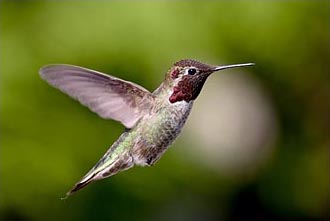
1/750 sec, f8, ISO 400
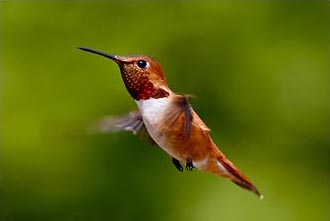
1/750 sec, f8, ISO 400
The highlight of our stay there was finding a very cooperative male harlequin duck (below left). We also spent a very nice morning at Esquimalt Lagoon where I was able to get some great shots of a Great blue heron feeding (below right).

1/1000 sec, f11, ISO 320
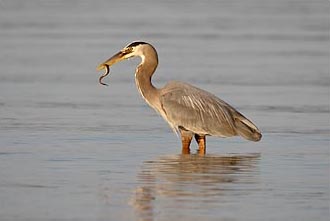
1/750 sec, f8, ISO 25
Then we spent five nights at friends' in Sidney. We went on two whale watching trips and got some decent images of orcas and harbor seals, and spent a wonderful morning on the Sidney Spit photographing fallow dear and small songbirds.
Then we headed over to the west coast of the island on our own and spent four nights at Pacific Rim National Park Reserve between Tofino and Uclulet. We were able to get some nice scenic images of the rugged coast (below). I used a three-stop neutral density (ND) filter when shooting the waves to get a longer exposure to give the moving water an abstract look. I took several exposures to get the look of the water that worked best. We also had a fantastic encounter with a black bear sow with two spring cubs foraging for food on the beach. Unfortunately, we didn't have our long glass with us because we had our landscape gear with us, so we were only able to adequately record the event using neurochrome. :)
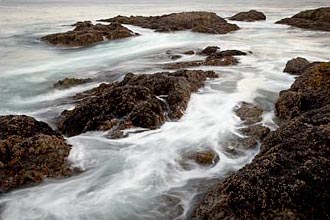
British Columbia, Canada
2 sec, f16, ISO 100
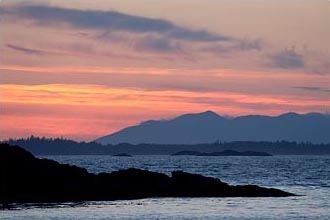
British Columbia, Canada
1/8 sec, f11, ISO 100
The weather on Vancouver Island was uncharacteristically warm and dry while we were there. It didn't rain once during the 21 nights we were there!
Travel: Manning Provincial Park
On our way from Vancouver Island to Banff, we spent two nights in Manning Provincial Park. We had a spectacular encounter with a black bear in a wildflower meadow one morning (below left). We also had fun shooting chipmunks right by our campsite (below right).
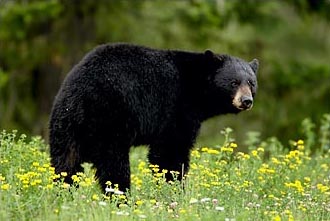
1/180 sec, f5.6, ISO 400
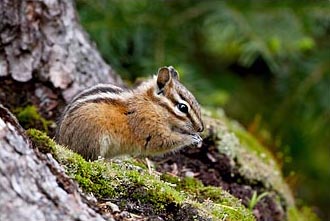
1/90 sec, f8, ISO 400
I'll tell you about Banff next time.
Take care and happy shooting.
— James
James Hager Photography :: www.jameshagerphoto.com




